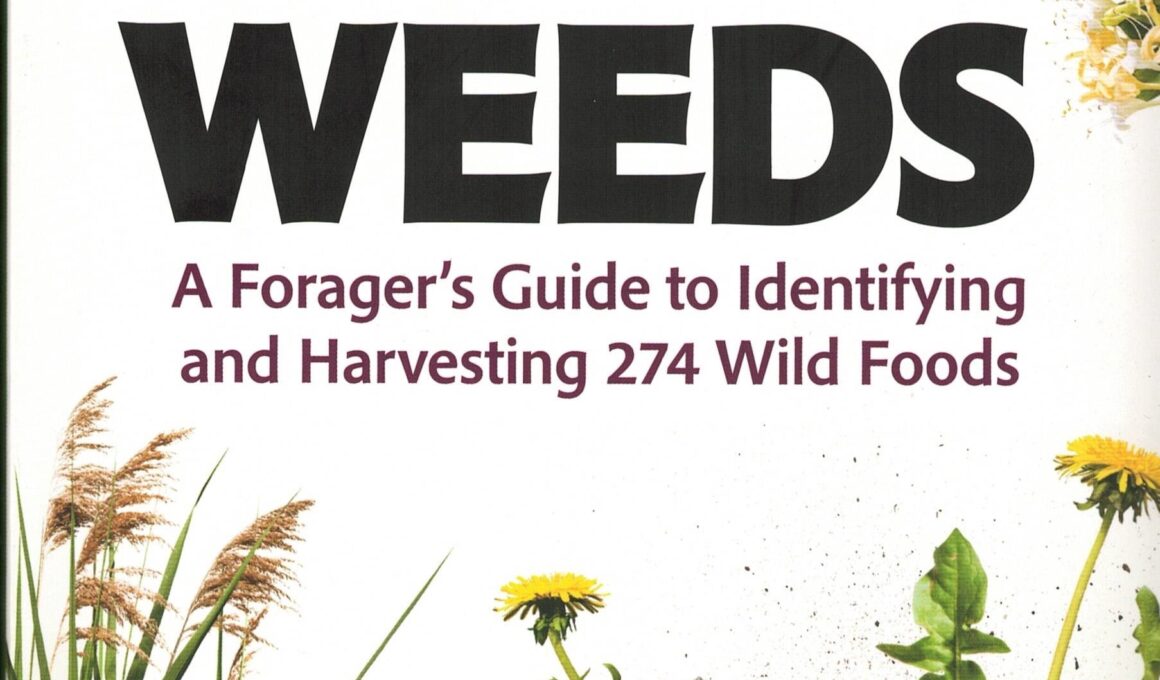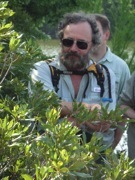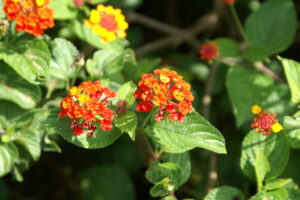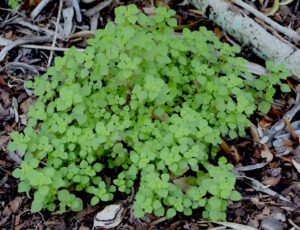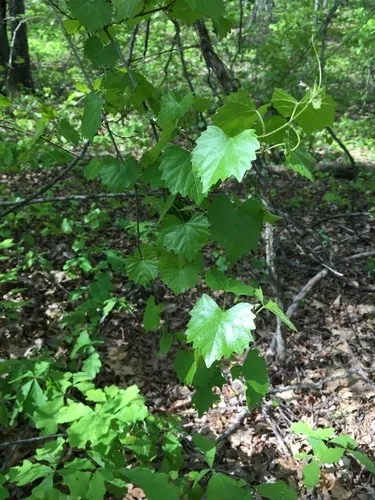I always decide how much I like a book by how many Post-Its I’ve used to mark pages with important information. “Green Deane” Jordan’s new book, Eat the Weeds: A Forager’s Guide to Identifying and Harvesting 274 Wild Foods, had more than a dozen fluorescent tags in just a few hours – and that was just the plants I knew enough to recognize.
Jordan is most well known as the creator of www.eattheweeds.com, the YouTube channel, https://www.youtube.com/user/EatTheWeeds/videos, and his weekly Florida foraging classes listed at https://www.eattheweeds.com/classes/. His new book makes that vast amount of knowledge easier to access.
Born in Maine, Jordan moved to Florida in 1977 so the book includes more information that works here than most general-interest gardening books. I love how it’s outlined, with an introduction that assumes we’re all beginners and very carefully describes plant parts used to identify specific species and an exhaustive spreadsheet of nutrients found in the 274 plants listed in the book.
Three particularly important points for foragers are included with most plants: avoid harvesting plants that may have been treated with herbicides, preparation tips for foraged foods, and safety notes that highlight when and what parts of the plant can safely be harvested. The highlight of each plant entry is Jordan’s detailed – and often funny – comments on uses for each plant. For instance, the profile on cattails describes them carefully, warns that younger plants can be mistaken for three toxic species, and then points out that during World War II, plans were being formulated to feed soldiers cattails because they produce more starch per cultivated acre than any other crop.
With so many plants to choose from, I can’t describe them all here, so I’ve focused on the plants most of us see so often that gardeners consider them to be weeds in their lawns or flowerbeds.
Dollarweed: A relative of ginseng, dollarweed can be found in every overwatered lawn. Using its botanical name, Hydrocotyle is also found in a powdered form in some health food stores and served in Asian restaurants. It tastes like “parsley on steroids” and is a significant source of vitamins E and B12, as well as a wide range of minerals.
Lantana: Listed as an invasive species in Florida, it’s still found in many butterfly gardens because it’s so attractive to pollinators. Immature berries are so toxic that they’ve killed children and cattle, but the ripe berries – deep blue, purple or black – are “very sweet and crunchy, like a cross between black currants and cherries.”
Pellitory: A winter weed that dies back in the heat, pellitory is popping up all over my yard. I allow it to grow because it’s larval food for the red admiral butterfly, but I’ll be eating it this winter based on a common nickname – cucumber weed. It can be eaten raw or cooked, but Jordan recommends chopping it up and adding it to a salad. Its iron content rivals that of spinach. Some people, however, may be allergic to it and anyone with hay fever should be cautious about touching or eating it.
Peppergrass: One of my personal favorite weeds because it’s the larval food for several species of butterflies, peppergrass is related to cabbage and collard greens too. The Incas began cultivating it more than 2,000 years ago and it will be a great addition to a salad or a snack while I’m working outside now that I know it’s good for people as well as caterpillars.
Skunk vine: Horribly invasive and a bane in my yard, skunk vine is called “chicken excrement vine” by the Chinese. Apparently, the odor goes away when it’s cooked, and it’s a folk remedy for arthritis, indigestion, and pain. I’ve pulled so much of this stinky stuff I’m not sure I’d ever be sick enough to try eating it though.
Spanish needle: Also known as beggar tick and monkey’s lice, Spanish needle is arguably the most-hated native wildflower in Florida, although bees and butterflies love it. Jordan lists a series of reasons why you should eat small amounts – some research shows that it lowers blood sugar, boosts immune systems, and inhibits the growth of some harmful bacteria – as well as tips on how to prepare it.
Spiderwort: Another common weed in Florida lawns, spiderwort is a bee magnet in my yard. I’ll try eating the leaves raw or sautéed like asparagus and add their pretty blue flowers to my salads. One of the key benefits of spiderwort is that its leaves don’t become inedible with age so they’re an outstanding green crop that survives hot Florida summers.
Wild grapes: Often seen climbing trees or sprawling over open spots, wild grapes in Florida don’t often have fruit because most of them are male plants. The leaves, however, actually have more nutrients than the fruit. Be careful though — other plants that may look like wild grapes can be toxic, including the commonly seen Virginia creeper, which is actually a Florida native plant. Virginia creeper contains oxalic acid which can burn your mouth and cause kidney damage. The book very carefully explains what to look for so you can tell the difference before you start munching down.
I’m sure I will never spend a weekend with Jordan eating nothing but what we can forage, but I’ll definitely be joining some of his foraging classes to learn more. Bay Soundings will start listing the local events on our calendar, so keep an eye out for a program near you.
